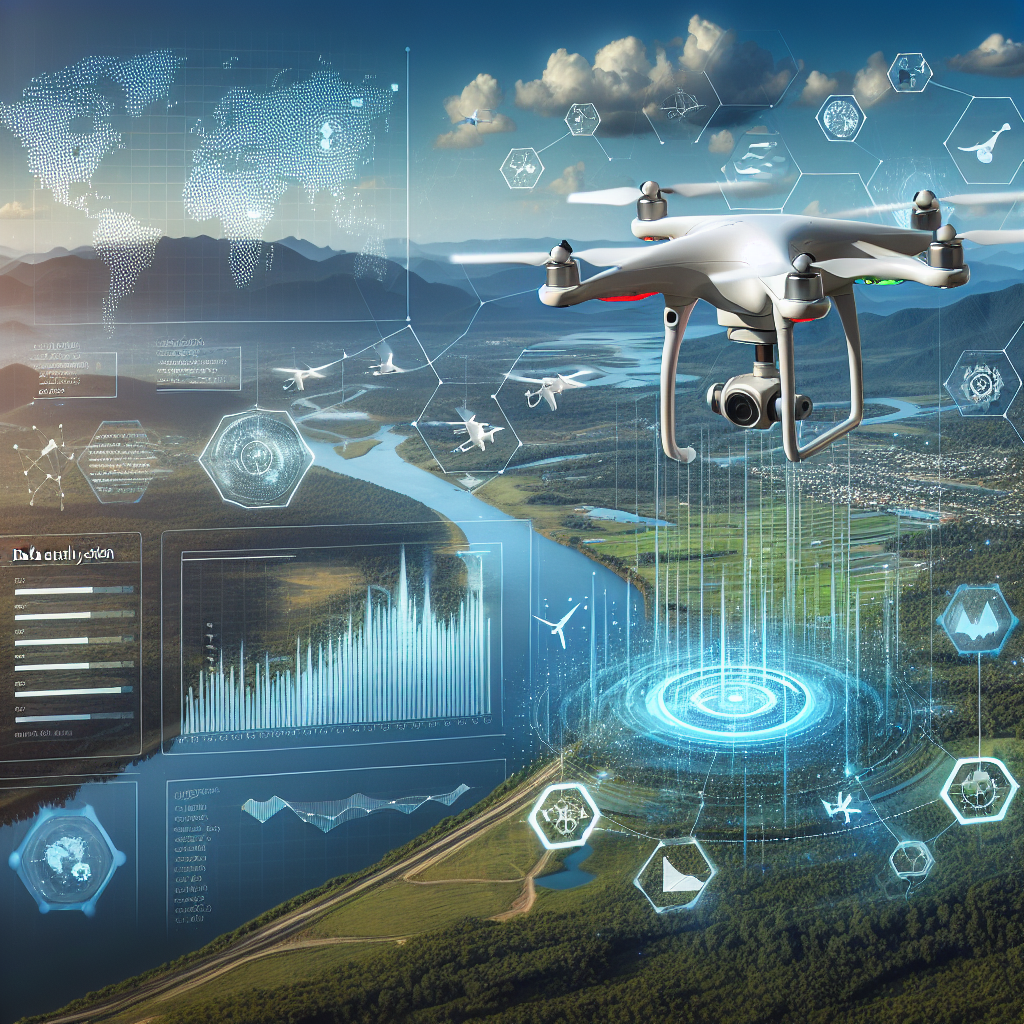Artificial Intelligence (AI) is revolutionizing the way environmental monitoring is conducted, offering new opportunities to improve data collection and analysis. By leveraging AI technologies, researchers and environmental agencies can gather more accurate and timely information about the state of our planet, leading to better decision-making and more effective conservation efforts.
AI Deployment in Environmental Monitoring
AI is being deployed in various ways to enhance environmental monitoring efforts. One key application is in data collection. Traditional methods of data collection, such as manual observations or satellite imagery, can be time-consuming and labor-intensive. AI, on the other hand, can process large amounts of data quickly and efficiently, allowing researchers to monitor environmental changes in real-time.
For example, AI-powered drones can be used to collect aerial data on deforestation, water quality, and wildlife populations. These drones can cover large areas in a short amount of time, providing researchers with detailed information about the state of the environment. AI algorithms can then analyze this data to identify patterns and trends, helping researchers to understand the impact of human activities on ecosystems.
Another way AI is improving data collection in environmental monitoring is through the use of sensors. These sensors can be deployed in various environments, such as forests, oceans, and urban areas, to collect data on temperature, humidity, air quality, and other environmental variables. AI algorithms can then process this data in real-time, providing researchers with up-to-date information on environmental conditions.
In addition to data collection, AI is also being used to analyze and interpret environmental data. For example, machine learning algorithms can be trained to identify patterns in satellite imagery, such as deforestation or urban sprawl. These algorithms can then predict future environmental changes based on historical data, helping researchers to develop strategies for conservation and sustainability.
AI technologies are also being used to monitor and predict natural disasters, such as wildfires, hurricanes, and floods. By analyzing historical data and real-time information from sensors and satellites, AI algorithms can detect early warning signs of potential disasters and help authorities to take preventive measures to mitigate their impact.
Overall, AI deployment in environmental monitoring is enabling researchers and environmental agencies to collect more accurate and timely data, leading to better decision-making and more effective conservation efforts.
FAQs
Q: What are some of the benefits of using AI in environmental monitoring?
A: AI offers several benefits in environmental monitoring, including improved data collection, faster analysis, and more accurate predictions of environmental changes. By leveraging AI technologies, researchers can gather more detailed information about the state of the environment, leading to better decision-making and more effective conservation efforts.
Q: How is AI being used to monitor air quality?
A: AI is being used to monitor air quality by analyzing data from sensors placed in various locations, such as cities, industrial sites, and highways. These sensors collect data on pollutants, such as carbon monoxide, nitrogen dioxide, and particulate matter, which can be processed by AI algorithms to provide real-time information on air quality levels. This data can then be used to identify sources of pollution and develop strategies to improve air quality.
Q: What are some of the challenges of using AI in environmental monitoring?
A: One of the main challenges of using AI in environmental monitoring is the lack of high-quality data. AI algorithms rely on large amounts of data to make accurate predictions, so it is important to ensure that the data being used is accurate and reliable. Another challenge is the complexity of environmental systems, which can make it difficult to develop AI models that accurately reflect the dynamics of ecosystems.
Q: How can AI help in predicting natural disasters?
A: AI can help in predicting natural disasters by analyzing historical data and real-time information from sensors and satellites. By identifying patterns and trends in this data, AI algorithms can detect early warning signs of potential disasters, such as wildfires, hurricanes, and floods. This information can then be used to develop strategies for disaster prevention and mitigation.
Q: What are some examples of AI technologies being used in environmental monitoring?
A: Some examples of AI technologies being used in environmental monitoring include AI-powered drones for collecting aerial data, sensors for monitoring environmental variables, and machine learning algorithms for analyzing satellite imagery. These technologies are helping researchers and environmental agencies to gather more accurate and timely data about the state of the environment, leading to better decision-making and more effective conservation efforts.

